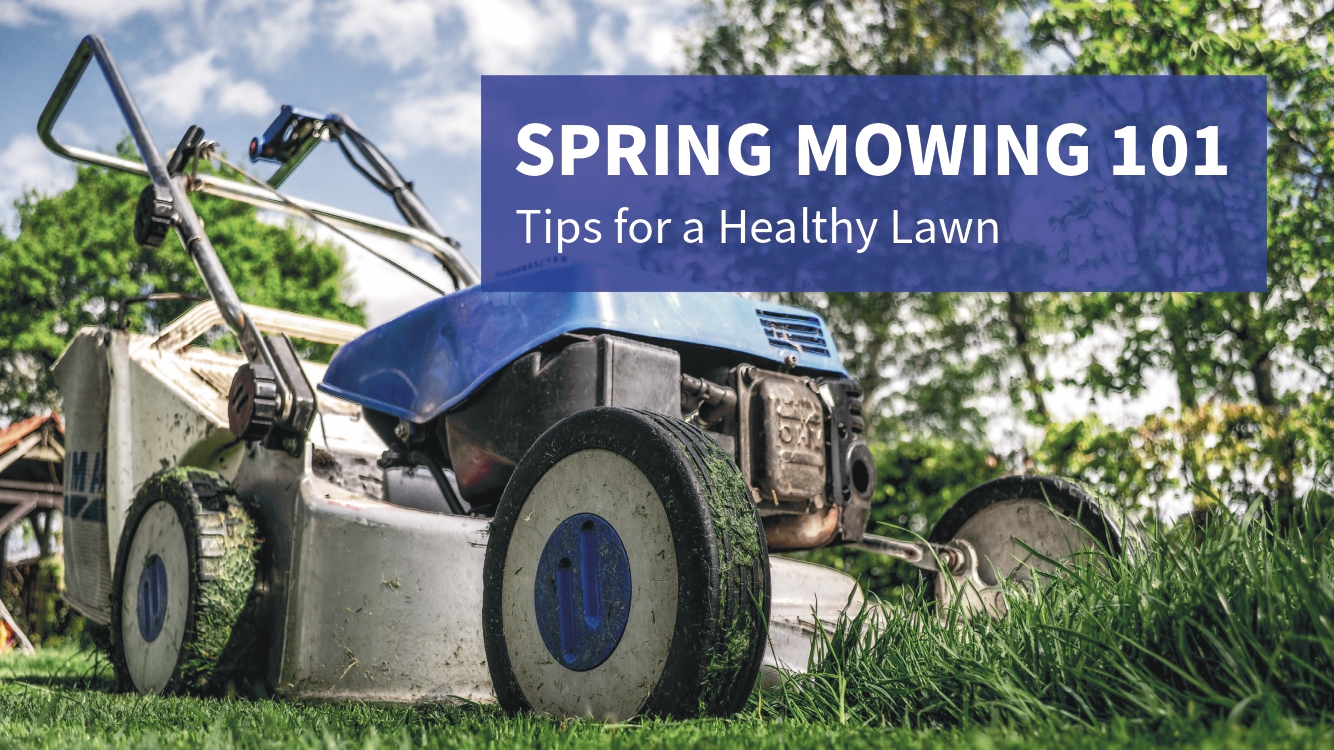Did you know your mowing practices can play a big role in the health of your lawn? Before you fire up your mower for the year, check out these 3 mowing tips you can implement now to make your lawn more healthy and resilient in the heat of the summer.
Lawnmower tune up
Don’t underestimate the importance of a sharp mower blade. A sharp blade ensures a clean cut of each grass blade, while dull blades have a tendency to rip grass blades, leaving them more susceptible to diseases. Investing some time into some lawn mower maintenance before summer is not only a great stay-at-home project, but will keep your grass healthier in the coming months of lawn care. Check out this informative how-to for a DIY lawn mower tune up from TheSpruce.com.
Longer is stronger
Deep roots are key to a water-efficient lawn! Give your lawn a chance to develop long, healthy roots for the summer months ahead. This means waiting until the grass is at least 2 inches long before your first mow of the season. As a general rule, healthier roots mean greater resilience to environmental stressors. In particular, longer roots make your grass more drought resilient by allowing them to access water stores deeper under the soil surface.
Another bonus to longer grass is weed prevention. Grass cut too low can allow sunlight to reach the soil, encouraging weed growth.
For your healthiest lawn, set your mower height to between 2.5 and 3.5 inches for cool season grasses (like Kentucky bluegrass), and between 1-3 inches if you have a warm season grass lawn. During peak growth, plan on mowing every 5-7 days to keep your yard looking it’s best.
Slow the Flow tip: Don’t forget your sprinkler heads. If you visually inspect your system and find that your longer grass is negatively effecting the spray pattern of one of your heads, take a pair of scissors and simply trim the grass immediately surrounding the affected head. This ensures your water gets where it needs to go (the surrounding lawn) while keeping the rest of your grass at a healthy length.
Avoid mowing wet grass
Mowing after a rainstorm, snow flurry (you never know in CO), or even before the early morning dew has had a chance to evaporate is not a best practice for your lawn. On top of making it harder to get a clean even cut, lawns mowed while wet are more prone to fungal diseases.
Additionally, the clay soil in many Colorado yards is more prone to compaction when wet. Passing over your wet yard in an effort to mow can create ruts and compact the soil to the point where it damages the grass itself over time. Compacted soil also prevents water from infiltrating the soil, which can lead to runoff and water waste when you run your system. Try to stay off your recently rained-on lawn for at least 24 hours to avoid unnecessary soil compaction.
Wet-mowing is not good for your mower, either. Wet grass can impede the movement of your mower blade, meaning it has to work harder to get the job done. Moisture in certain mower parts can also cause them to wear down faster over time. For less headache and a better-looking lawn, wait until things have dried out before you mow.
Sometimes, it’s better (and easier) to let your grass do its thing in between mowings. It wants to be healthy, vibrant, and resilient as much as you want it to. Interested in a sprinkler efficiency check-up? Learn more about our Slow the Flow program here.












